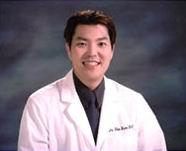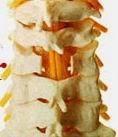1. What is Chiropractic?
Chiropractic is a system of health care that releases a serious stress from your body: the vertebral subluxation complex or VSC (sometimes just called a “subluxation”). A subluxation is an often painless, tiny, spinal distortion that can affect your nerves, muscles, internal organs, discs, bones, brain function, posture, and overall health.
2. How Do We Get Subluxation?
Subluxaions are caused by stress of all kinds: poor posture, accidents, sitting or working in the same position for long periods and sports. Even emotional stress can suddenly knock us “out of whack.” Adults can carry subluxations in their bodies that were originally caused by a stressful birth a childhood fall. Unless they have a chiropractic spinal checkup these long-standing subluxations may never be corrected. They may develop physical and/or emotional dis-ease or body malfunction and subsequent health problems due to these longstanding subluxations. Studies reveal that nearly everyone has subluxations in their spine; it is a “hidden epideminc.” For that reason you and your family need jot have your spines checked periodically by a doctor of chiropractic-just as you get your eyes, teeth and blood pressure checked!
3. What conditions benefit from chiropractic care?
Although chiropractic is used most frequently to relieve low back pain, studies have found it to be effective for a variety of conditions, such as migraine headaches, neck and shoulder pain, carpal tunnel syndrome, fibromyalgia, and infantile colic.
4. Does Chiropractic hurt?
Under normal circumstances, adjustments don't hurt. The patient may experience a minor amount of discomfort during the adjustment which lasts only seconds.
5. Is Chiropractic safe?
Chiropractic adjustments or manipulations are extremely safe. The risk factor is estimated to be in excess of one million to one.
6. What kind of education and training do doctors of chiropractic have?
Chiropractors receive an education that emphasizes neuromuscular diagnosis and treatment. Preparation for the practice of chiropractic is concentrated on three areas of learning; basic training in the biological and health sciences (anatomy, physiology, histology, biochemistry, clinical and radiological diagnosis); specialized training in the chiropractic discipline (theoretical studies, practice, diagnosis and applications); and extensive clinical training.
7. Have any studies been published showing what chiropractic is effective for?
Several studies have documented the effectiveness of chiropractic in relieving back pain. More recent studies have shown chiropractic to be effective in treating infantile colic and migraine headaches.
8. What can I expect on my first visit?
The first thing a chiropractor will do is ask you about the health complaints about which you are chiefly concerned. The DC will also ask about your family history, dietary habits, other care you may have had (chiropractic, osteopathic, medical, etc.), your job, and other questions designed to help determine the nature of your illness and the best way to go about treating the problem.
A physical examination will be performed in accordance with your DC's clinical judgement, which may include x-rays, laboratory analysis and other diagnostic procedures. In addition, a careful spinal examination and analysis will be performed to detect any structural abnormalities which may be affecting or causing your condition. All of these elements are important components of your total health profile, and vital to the doctor of chiropractic in evaluating your problem.
9. What other services do you offer besides chiropractic?
Our office offers a variety of alternative health treatments, including Acupuncture, herbal medicine, therapeutic massage, cranial adjustment, home exercise program, and nutritional consulting.










